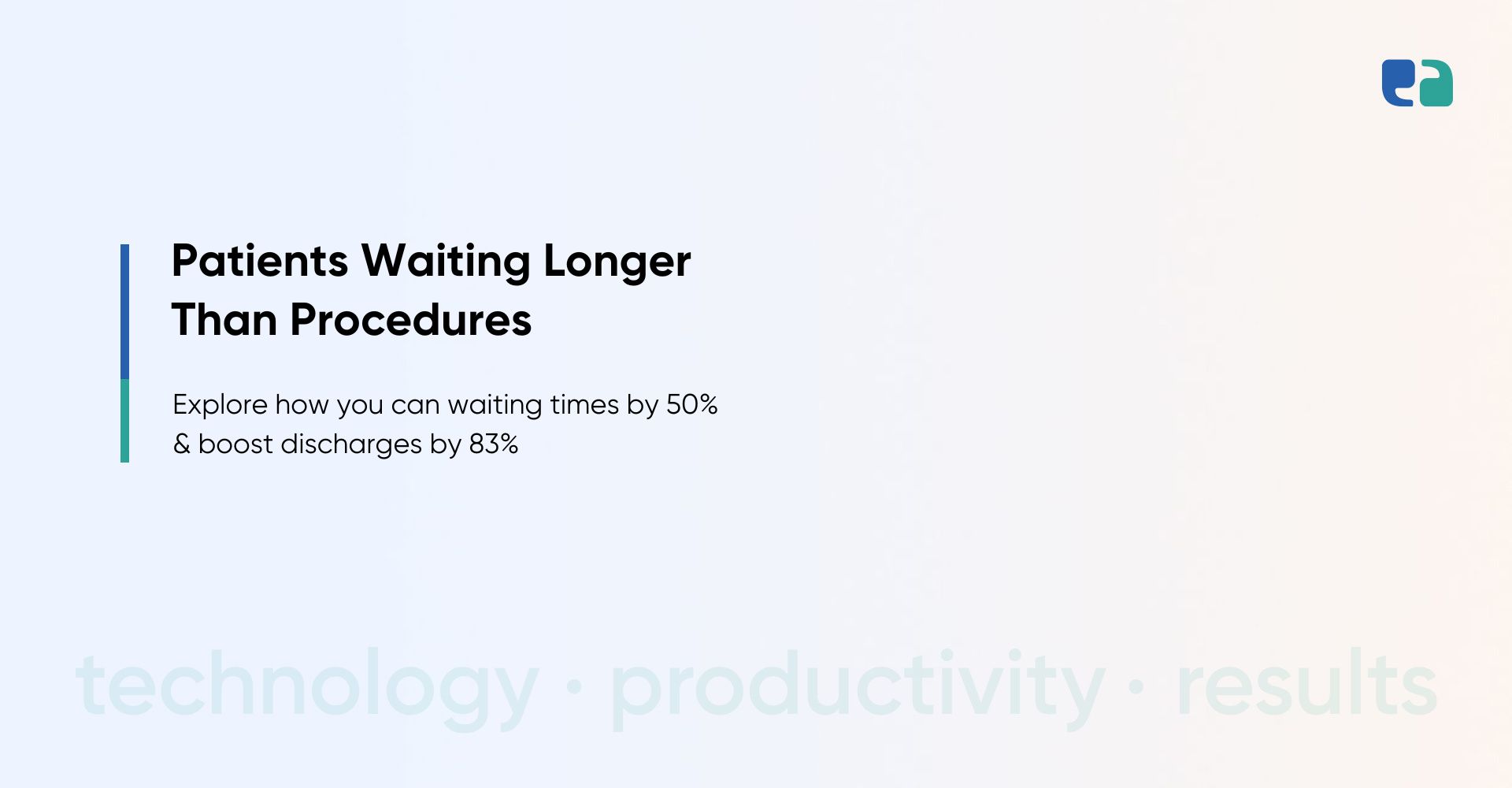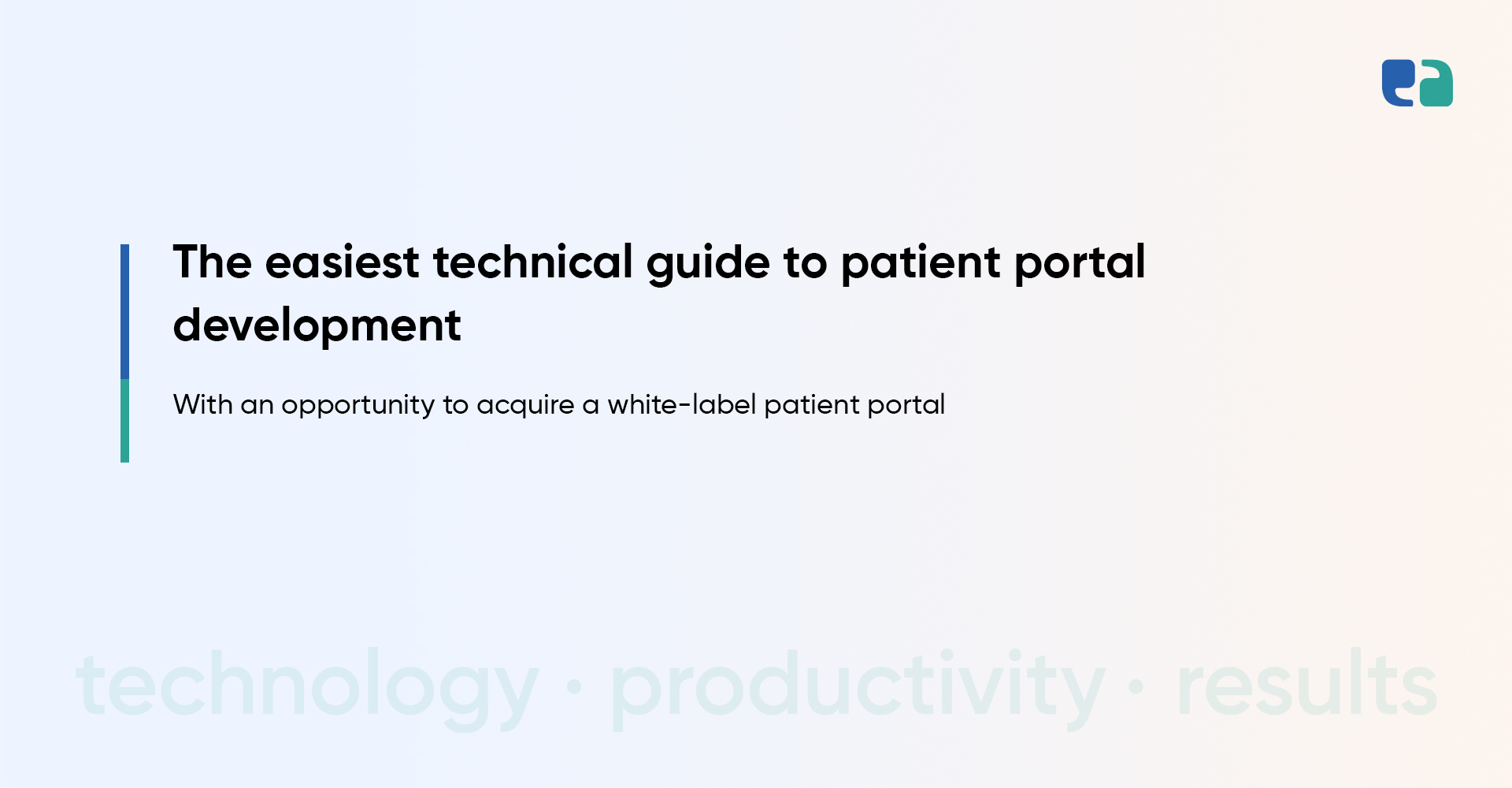In healthcare, managing patient flow is key to delivering smooth and efficient care.
Patient flow refers to how patients move through different stages of care—admission, treatment, discharge, and follow-up.
When this process runs smoothly, healthcare facilities can provide better care, reduce wait times, and operate more efficiently.
But poor patient flow can create big problems.
Long wait times, crowded emergency departments, delayed treatments, and higher costs are just a few examples. This is a growing concern for healthcare systems worldwide.
For instance, in Canada, a study by the Fraser Institute reported record-high wait times for medical treatments in 2024.
In the U.S., research showed that a single hospital could save $3.9 million a year by simply improving patient transfers from the emergency department.
These challenges highlight the urgent need for patient flow software.
The right solution can help healthcare facilities overcome these issues, enhance patient care, and save costs.
Let’s explore how building a custom patient flow manager software can transform healthcare operations.
What is Patient Flow and Why Does it Matter?
Patient flow is how patients move through a healthcare facility—from admission to discharge.
It includes everything from medical treatment to resource use and system coordination. Managing this flow well is crucial for delivering timely and efficient care.
When patient flow is optimized, hospitals and clinics can:
- Reduce wait times.
- Improve patient satisfaction.
- Use resources efficiently.
- Help staff work more effectively.
- Save costs.
But poor patient flow can cause big challenges, such as:
1. Emergency Department Crowding
When patient flow slows down, emergency departments (EDs) often get overwhelmed.
This leads to longer wait times, ambulance diversions, and delayed treatments.
A study in the Western Journal of Emergency Medicine found that a hospital in New York could save $9.8 million annually by eliminating ED overcrowding.
2. Long Wait Times
Delays in patient flow often result in longer waits for appointments, tests, and treatments.
In Canada, the Fraser Institute reported record-high wait times in 2024.
Patients in Ontario waited a median of 23.6 weeks for medical treatment, while in Prince Edward Island, it was a shocking 77.4 weeks.
3. Delayed Procedures
Inefficiencies in scheduling can cause delays in surgeries and other critical treatments.
For instance, concentrating elective surgeries at the start of the week often overcrowds post-op units, straining resources.
4. Lower Patient Satisfaction
Long waits, delays, and poor communication frustrate patients.
This often leads to dissatisfaction with their care experience.
5. Staff Stress and Burnout
Healthcare professionals bear the brunt of poor patient flow.
Ward managers, for example, spend up to three hours a day manually managing ward capacity. This adds stress, increases burnout, and raises the risk of errors.
The Benefits of Patient Flow Management Software
Why Choose a Custom Patient Flow Software Solution?
Off-the-shelf patient flow software may seem convenient, but it often doesn’t meet the unique needs of individual healthcare facilities.
These generic solutions can lack flexibility, scalability, and seamless integration with existing systems. Let’s explore why a custom solution is the smarter choice:
Essential Features of a Custom Patient Flow Management System
A custom patient flow management system should include key features to streamline operations and improve patient care. Let’s explore the must-haves:
1. Real-time Patient Tracking
Know where patients are and what they need. Real-time tracking reduces delays, improves safety, and minimizes wait times.
2. Bed Management
Track bed availability and forecast demand to ensure patients get admitted quickly. Tools like Access Patient Flow Manager provide real-time views to balance supply and demand.
3. Appointment Scheduling
Simplify booking with online scheduling, automated reminders, and efficient slot management. This reduces no-shows and keeps the clinic running smoothly.
4. Automated Alerts
Instant alerts notify staff about critical updates, like a patient needing a transfer or urgent test results. This ensures quick responses and minimizes disruptions.
5. Analytics Dashboards
Track KPIs like wait times and bed occupancy. These PMS tools offer insights to spot bottlenecks and measure progress toward goals, such as reducing emergency readmissions.
6. Secure Messaging
Instant, secure communication among care teams prevents miscommunication and keeps everyone on the same page.
7. Patient Portals
Let patients schedule appointments, access records, and communicate with providers. This eases staff workload and boosts patient engagement.
8. Mobile Access
Staff can update records and manage workflows on-the-go. Patients benefit from the convenience of managing their care from their phones.
Cost Considerations for Custom Development of Hospital Patient Flow Software
Building a custom patient flow management system comes with various costs, but it’s important to understand the key factors involved:
- Project Scope: More complex systems with multiple features and integrations will cost more. For example, connecting with EHRs or lab systems will increase the cost.
- Technology: Some tech options, like cloud platforms, come with extra fees and require specialized skills, adding to the cost.
- Team Size: Bigger or more experienced teams may have higher rates, but they deliver efficient, reliable solutions.
- Integration: The complexity of connecting the software with existing systems impacts the cost. Custom integrations will be pricier.
- Customization: Tailoring the software to specific department needs increases development time and costs.
- Testing: Comprehensive testing ensures quality but adds to the overall expense.
When budgeting, don’t just think about the initial costs. Consider ongoing expenses for updates, training, and support.
Also, weigh the potential ROI—such as improved efficiency, reduced wait times, and higher patient satisfaction—which can offset the development costs.
For example, reducing hospital stay times can lead to big savings and better resource use, making the investment worthwhile.



